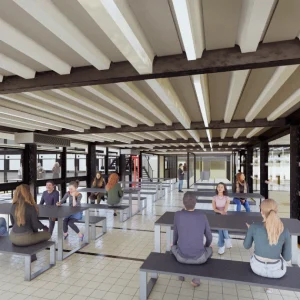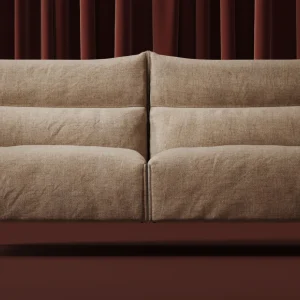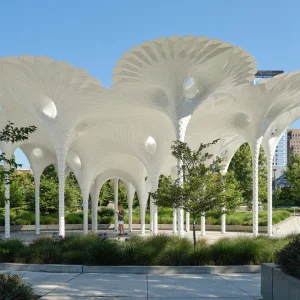The new facility is located on the university’s Parnassus campus, which will function as the headquarters for the Eli and Edythe Broad Center of Regeneration Medicine and Stem Cell Research at UCSF. The facility was officially opened on 9 February 2011.
Rafael Viñoly Architects has conceived the building as an architecturally significant structure. He has created a long horizontal structure in response to a narrow, steep sloping site at the foot of Mount Sutro. The main floor is divided into four split levels, designed to function as one continuous laboratory. Each level steps down a half-storey as the building descends the wooded mountain slope. Each level is topped by an office cluster and a green roof. The building has been constructed on a 60 degree slope.
The $123 million building’s exterior ramps and stairs are designed to exploit the temperate climate. It provides continuous circulation between all levels, and connects to three nearby research and medical buildings by means of a pedestrian bridge.
The interior of the building features the evolution between the split levels, which are envisaged as hubs of activity. Break rooms and stairs are located at these interfaces to enhance interaction; and interior glazing maximises visual connectivity between the lower labs and the upper offices. The laboratories take up an open, horizontal floor plan to promote collaboration. The space features highly flexible, custom-designed casework system that enables quick reconfiguration of the research programme. Abundant south-facing glazing helps in drenching the open laboratories and offices with natural light and views of the wooded slope of Mount Sutro nearby.
The idea for the building was conceived in 2004 by leaders of the California Institute for Regenerative Medicine (CIRM), the state agency established to administer the $3 billion, tax-payer supported fund for stem cell research. The CIRM leadership envisioned the creation of stem cell buildings at universities throughout California. Since no federal funds were used to construct the facility or purchase equipment within it, the research is immune to variations in federal funding policy regarding human embryonic stem cell research.
In 2006, Ray and Dagmar Dolby contributed $16 million to launch the university’s fundraising campaign for the facility. In 2007, UCSF received a $34.9 million grant from CIRM and a $25 million grant from The Eli and Edythe Broad Foundation in 2008. Two weeks ago, UCSF further received a $20 million donation from the Dolbys. The university has $12 million left to raise.





